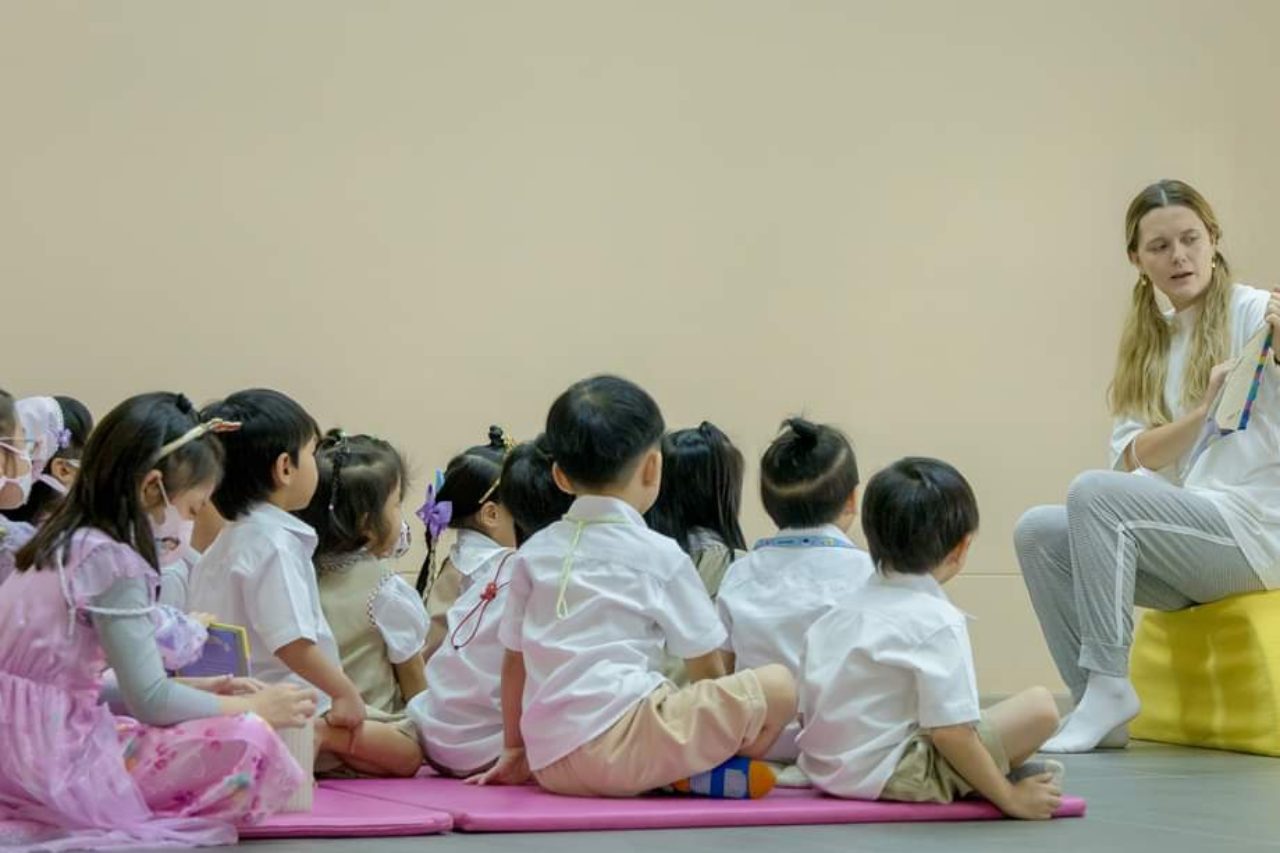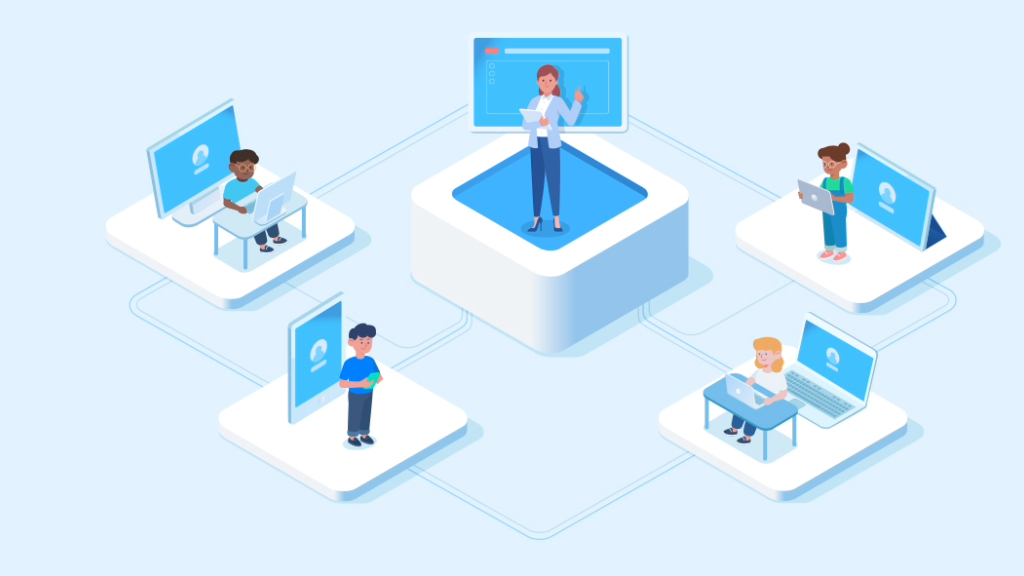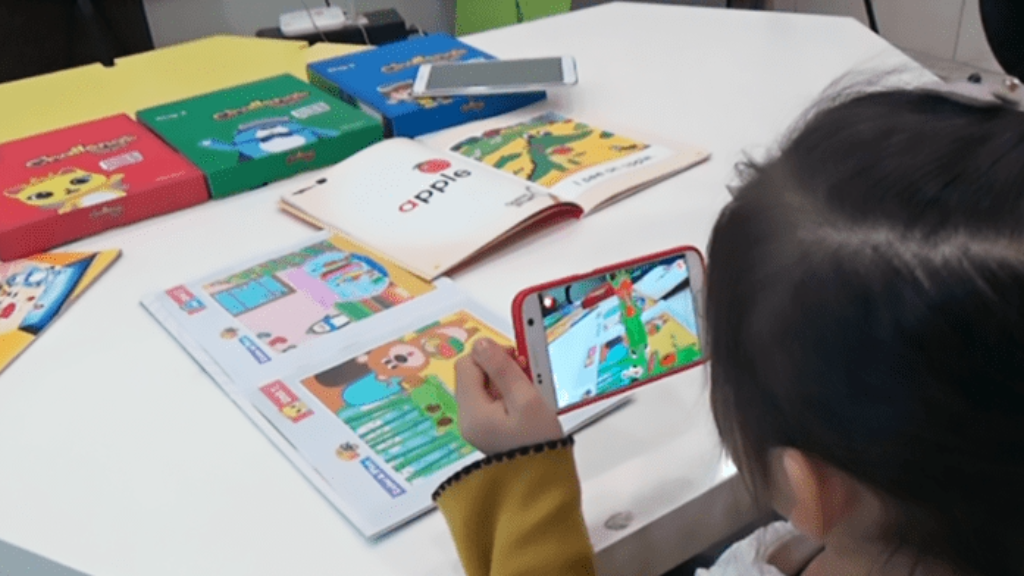EdTech in Thailand : In 2022, the worldwide EdTech market reached a valuation of $123.40 billion, with projections indicating a 13.6% growth from 2023 to 2030. It is safe to say that the EdTech sector is experiencing rapid expansion. Through the incorporation of innovative tools like artificial intelligence, virtual reality, and adaptive learning platforms, EdTech solutions such as AllviA empower educators to tailor and enrich the learning journey for each individual student. This personalized approach fosters higher engagement, motivation, and knowledge retention by tapping into the unique capabilities of students from diverse backgrounds. In our conversation with Megan M, an Australian teacher working in Thailand, we deeply explore the myriad challenges that educators in Thailand are currently facing. Furthermore, we delve into the potential remedies that EdTech brings to the table as we discuss its promising solutions.
Teacher’s introduction : EdTech in Thailand
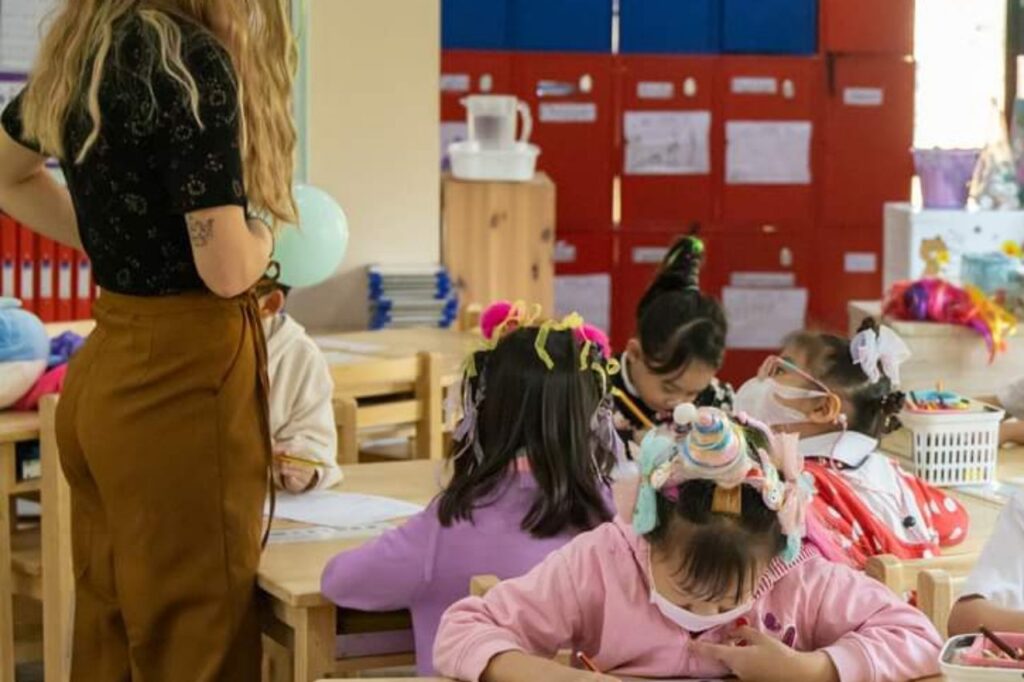
Thank you very much for your time. Could you tell us about yourself?
My name is Megan, and I am a primary school teacher from the Gold Coast, Australia. I have been a qualified teacher for seven years, and have worked in various countries around the world.
Could you tell us about your current job?
I currently work as a Year 1 teacher at a British International School in Chiang Mai, Thailand. I teach all core subjects- English, Phonics, Values, Maths, Science, Geography, and History.
Educational environment in Thailand
Can you describe your classroom in Thailand?
My school has smaller class sizes than what is usually expected in Thai Schools. As a Year 1 teacher, my class size is 25. In many primary classrooms across Thailand, the class sizes average at around 40-50 for public Thai schools and about 30-40 students for private Thai schools.
Throughout primary education, Thai students can expect to have a homeroom teacher teach core subjects. I am not required to teach P.E., art, music, drama, dance, or Thai. Although I conduct all classes in English, these specialist classes are in Thai. Students generally begin to have specialist English, Science, and Maths teachers in Years 5 or 6 and will have 50-minute lesson periods.
My school is very small and only has about 130 students enrolled. There is only one class per year level and it currently only goes to year 9. We start at pre-nursery (age 2), and offer after-school classes regularly (Chinese, football, dance, etc.).
Teachers arrive at school at 7:30 am and work until 4:15 pm. Classroom teachers have about 3.5 hours of face-to-face instruction per day. The rest of the school day is used for two other special classes, snack time, and lunch. Although they only teach 3.5 hours per day, they must spend their planning time on campus and can only leave for lunch. Regular hours for students are 8:30 am until 4:00 pm.
Can you give us an overview of the basic curriculum in Thailand?
Thailand’s national curriculum shares some similarities with the English curriculum. It has eight core subjects: Thai, Maths, Science, Social Studies, Religion, P.E., Art, Technology, and Foreign Languages. School is free and mandatory until age 15, and primary schooling begins at age 6. Students can attend kindergarten, but this is not compulsory for young learners.
International schools generally follow British or North American calendars and have breaks for Christmas, Easter, and summer. However, Thai schools run a little differently from May to March with breaks for Thai national holidays instead.

The international school I work at uses the Cambridge International Curriculum, in addition to Jolly Phonics for Early Years learners. This curriculum has a big focus on developing literacy and numeracy skills, although the geography and history aspects of the curriculum do not align very well with Thai learners. Often, we adjust this by using the Thai curriculum (the Basic Education Core Curriculum of 2008). Luckily, the Thai teachers at my school are well-qualified, knowledgeable, and helpful!
What is the average level of parental involvement in student education?
Parents and caregivers are heavily invested in their children’s education in Thailand. Being educated and learning English are very sought-after skills in Thai society, and parents will usually make sacrifices to give their children private tuition. Homework is expected for all students, and caregivers will regularly reach out to teachers for additional homework for their children. Parents are encouraged to directly contact the classroom teacher for questions and issues and are invited to have parent-teacher meetings twice a year. Fortunately, the school provides Thai or Chinese translators for these meetings.
How can you become a public school teacher EdTech in Thailand?
Teachers are held in high regard across Thailand. To become a teacher as a Thai person, you require a bachelor’s degree in Education, admission to the teaching college to obtain a license, and continuous professional development. For foreigners wishing to teach at one of Thailand’s many international schools, the standards are the same but you must also be a native English speaker and be qualified in your home country. If a foreigner does not have an education degree, they must obtain a master’s of postgraduate teaching qualification and get their home teaching license.
To become a TEFL teacher at a private, public, or ESL center in Thailand as a foreigner, you must hold a bachelor’s degree and a TEFL.
Difficulties faced by EdTech and teachers in Thailand
What challenges do teachers in Thailand face in providing quality EdTech?
The main challenge that teachers face in Thailand is the lack of funding for resources. As education is free in Thai public schools, it is often challenging for schools to have the budget to purchase new supplies, additional support, or more space for smaller classes. International schools have bigger budgets and spend a lot of it hiring additional support staff and marketing to grow the school. As Thailand is a very popular destination to teach in, there is also the added challenge of having high staff turnover rates. This means that the leadership expectations change quite often, curriculum and planning resources are frequently being amended, and it is harder to find a rhythm.
In your experience, how has limited access to resources such as textbooks affected teachers in Thailand?
When I arrived in my Year 1 classroom, I found dusty Cambridge textbooks to use. These were the sort of books that you would hand out to high schoolers and expect them to take notes with, they were not workbooks. There were also no Jolly Phonics resources to use. Immediately, my start to the year was more difficult and I had to scramble to print off work to make into books. Create the right learning materials for your learners because outdated materials are not suitable for them. They also spend hours searching for materials. This could be avoided if they had access to the right learning materials.

How do language barriers between students of different language backgrounds affect EdTech and teaching and learning in Thailand?
Although there are some linguistic differences between regions in Thailand, Thai is widely spoken throughout the country. In Thai public schools, all learning is conducted in Thai (aside from language classes). In an international setting, it is the inverse. Children who do not speak Thai with at least semi-fluency are encouraged to enroll in an international school. Resources are limited in Thai schools, making it challenging for non-Thai students to learn in the immersive classroom. For this reason, foreign families usually apply for international schools. International schools are mainly a blend of Thai, Asian, and Western families.
What challenges do teachers in remote or rural areas face and how do these challenges affect educational outcomes?
Teachers in remote areas of Thailand can be expected to have major challenges with resources and academic funding. Families in some regions may face difficulties in funding their child’s school expenses (books, pens, uniforms, shoes, etc.), and students drop out of school at age 15 to help in the family business. It can be disheartening as a teacher to know that a student may complete school early, instead of attending university, due to financial problems. Some students also do not value their education, as their home life does not value schooling as much as [for example] farming or manufacturing. This can cause issues with homework and general behavior.
EdTech in Thailand
How often do teachers use EdTech in their classrooms and how do you select a solution to use?

Digitized educational platform for any subject
Teachers in public schools have a limited ability to incorporate technology within the classroom. Most classrooms have whiteboards with projectors, but not all public school classes can be expected to have this. Private and international schools vary greatly in their ability to use EdTech within the classroom. Post-pandemic, my international school has online programs that are readily available for classroom use. In my classroom, we use Seesaw, Prodigy, Line, Zoom, etc. These apps are chosen through recommendations from other teachers, discussions as a teaching team, and trial and error. However, I would hope to have an app that includes all the functions of these apps in one platform.
Are certain subjects or topics particularly difficult for teachers in Thailand to teach? If so, what is needed to mitigate them?
As a 21st-century teacher, I love using technology within my classroom. My main challenge is not having adequate resources to use my EdTech programs in small-group situations. For example, having a set of iPads/tablets would enable my learners to complete reading comprehension work or practice Maths throughout group rotations. Not having this means that I am required to locate and print resources each week for these group rotations. Of course, teaching history to Thai students is challenging as well, as I can always ask my colleagues for support.
How has EdTech helped solve the problem of overcrowded classrooms and high student-teacher ratios in your country?
Incorporating technology into the classroom is a great way to reduce the overpopulated class sizes, and improve the class ratios. When students are given the option to learn using learning programs and tools, their desire to learn appears to be greater. Although many classrooms in Thailand have basic technology and can display resources or learning tools to the whole class, many do not have the capacity for individual students to engage with technology. Most classrooms do not have students submitting work online, watching lessons, communicating with others, or interacting in an online LMS. Because of this, EdTech has not been able to majorly alter the in-person classrooms or ratios in Thailand. It has, however, made it easier for teachers to teach and students to learn.
Having EdTech was especially helpful during Covid-19 when you were able to still teach students remotely. EdTech has also changed the way a lot of students receive tutoring and has opened the door for children in all regions to have highly-qualified teachers at their fingertips. After-school tutoring class sizes were previously very large, but have now decreased due to centers having more time slots available for online sessions. This means that students have more interactions and greater speaking time, and get more individualized support.
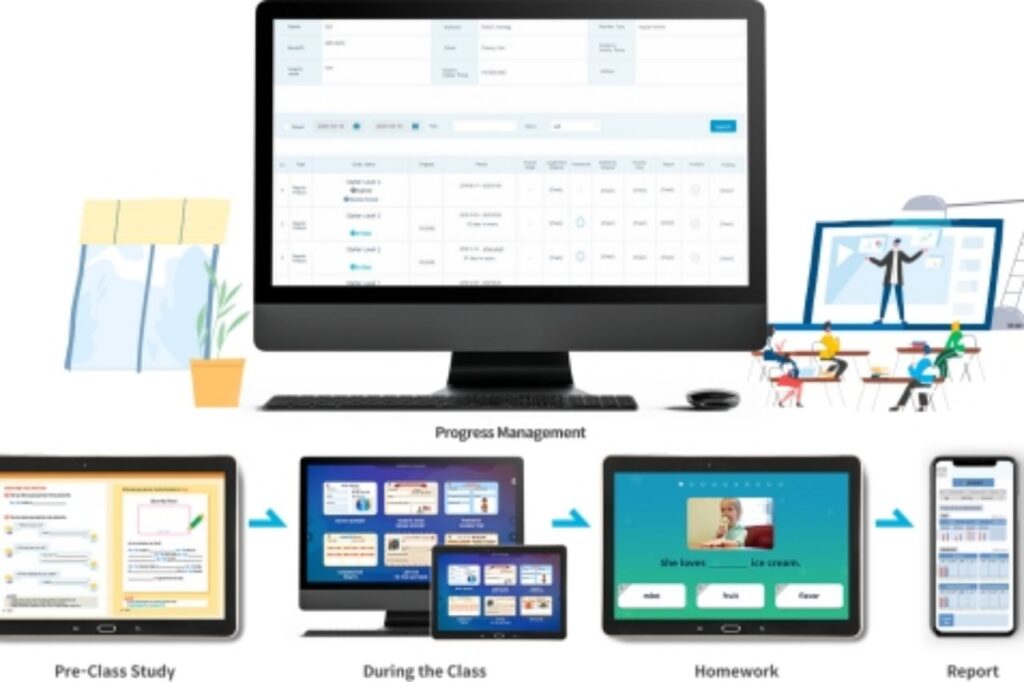
One educational platform from the beginning to the end of class.
How has the use of EdTech impacted your teaching and do you measure the effectiveness of EdTech tools in improving student outcome?
EdTech has changed the way I teach, for the better. The activities and lessons are now more engaging to the learners, and they enjoy being able to learn with the use of technology. For example, my students are more excited to be able to read a story online and respond to questions using the computer than they are to pick up a book and use a worksheet. EdTech has given them the desire to learn more and do more. Not only this, but it has also improved my planning and lesson preparations. In my student’s Maths homework, I can see their activity time and their responses, and which curriculum areas they need to develop. I am also able to download a report of this, to add to my lesson plans. This streamlines my job and stops me from having to find target areas for each student manually.
How does EdTech support individualized learning in the classroom and how do you involve parents in their child’s EdTech experience?
EdTech means that students aren’t required to learn the same thing, at the same time. It is far easier to differentiate for students using technology than it is to do it without. For the reading software I use, I can select which level I want the learner to read and which skills I want them to develop in the comprehension task. This means that each student gets the exact support that they need.
Parents need to be involved in classes that use EdTech because they need to help set up accounts and submit assignments. I always encourage my families to oversee what their child is doing on the device and work alongside them. I involve families by sending regular updates on their child’s learning and some photos each week.
Challenges using EdTech in Thailand
What challenges have you encountered in implementing EdTech in your classroom?
Implementing EdTech in my classroom hasn’t been much of an issue. I have found it much easier to find applications that are free to use so that I don’t need to apply for them from the school’s budget. Although, sometimes applications aren’t available to be downloaded in Thailand, which can cause some frustrations. As with anything regarding technology in the classroom, proper prior research has been essential for successful implementation.
Have you ever encountered any technical issues or limitations when using EdTech? If so, how do you deal with them?

Device availability has been a problem that I have sometimes faced as a teacher in Thailand. Any EdTech application for the students to use should always be available as an app, as many families do not have access to a computer. Smartphones are very common in Thailand, and children do often have access to them, so it is always a better option to have an app-ready program to use.
Programs created using AllviA
What efforts have students or teachers made to improve their knowledge and skills in using EdTech in Thailand?
When starting at my school in Thailand, the leadership team gave clear instructions on how to use the applications we had available at that time. They also ran through the data protection and privacy issues involved, and we completed some training around this. For some teachers, using technology seems daunting but my leadership team has always been helpful and open to questions around the use of technology.
My students LOVE learning with EdTech programs. They cheer when it is their day to use the computer room, enthusiastically share their favorite resources with others, and ask for extra homework. Students have grown up with technology, so new learning resources are readily available to them.
The Future of EdTech in Thailand
What advice would you give to other teachers who are just beginning to use EdTech in their classrooms?
I encourage all teachers to just give it a try! Starting from scratch is like starting a new job- it is challenging at the start and you may feel overwhelmed with having to learn an entirely new way of teaching. But, it is worth it. Using technology in my classroom has changed my role as an educator. I can now spend more time learning alongside the students, and less time grading, writing lesson plans, and printing resources.
What developments or innovations in EdTech do you think will have the greatest impact on the challenges teachers in Thailand will face in the future?
In an ideal world, each student being provided with a device will prove to be hugely beneficial to the educational outcomes of each student in Thailand. That way, teachers can be sure to implement EdTech within the learning environment and engage all learners. Being able to group students into small classes through the use of EdTech would prove to have a huge impact on learning and teaching. This allows you to differentiate learning based on students’ different needs and ensure that each student is supported throughout their entire educational journey.
LMS to manage everything from registration to grades
What developments in EdTech are you most excited about and why?
I would love to see some more resources that are cross-curricular and multi-faceted, instead of having different apps for different purposes. Even having popular apps collaborate so that students have one account and teachers can view all reports would be hugely beneficial. Imagine that!

